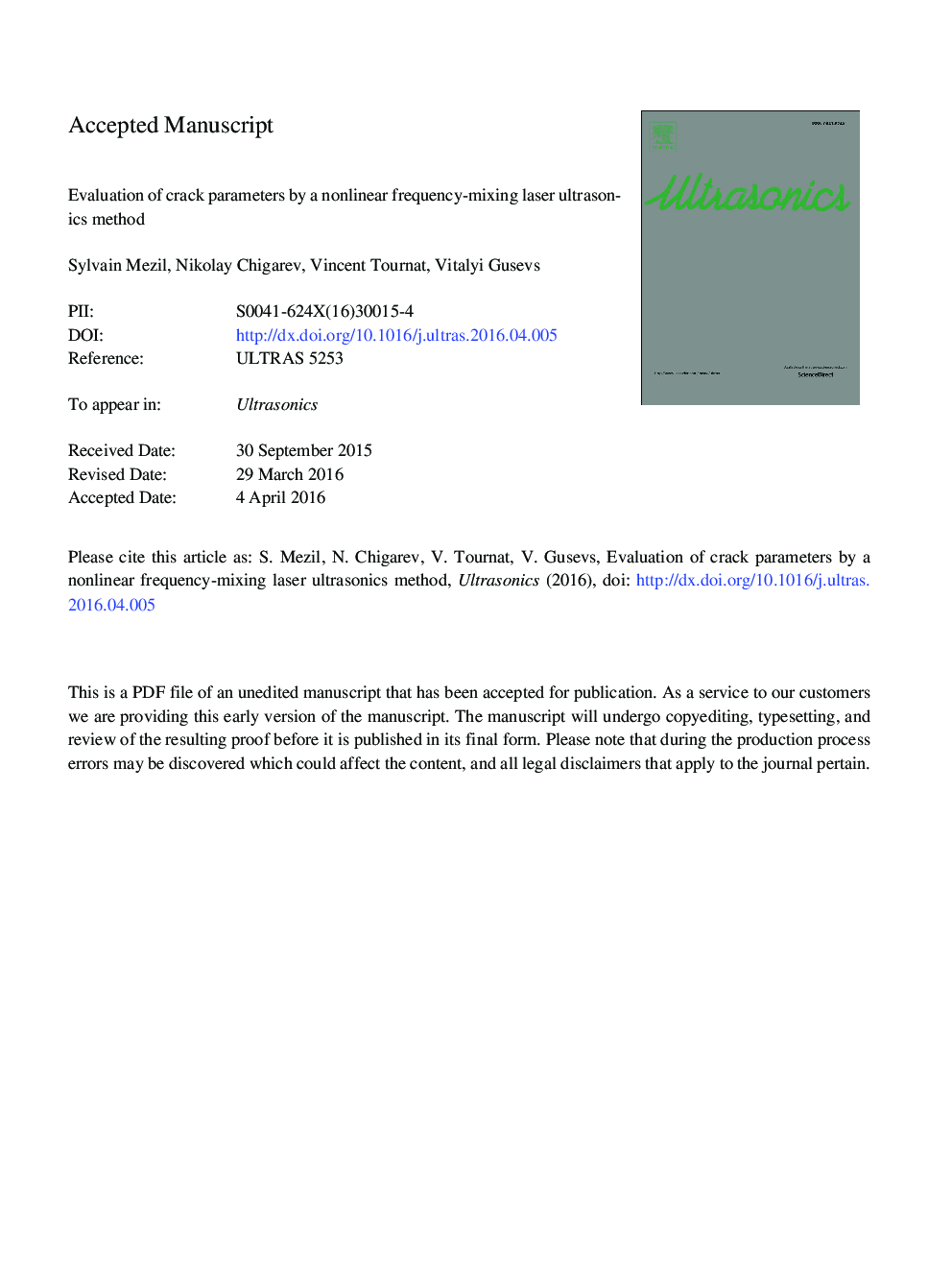| Article ID | Journal | Published Year | Pages | File Type |
|---|---|---|---|---|
| 8130282 | Ultrasonics | 2016 | 19 Pages |
Abstract
The local evaluation of several parameters of a crack is realized with a nonlinear laser ultrasonic method. The method is based on the sample excitation by two laser beams, independently intensity modulated at two cyclic frequencies ÏH and ÏL (ÏHâ«ÏL) and on the detection of nonlinear frequency-mixing ultrasonic components at frequencies ÏH±nÏL (n an integer). Frequency-mixing is a nonlinear process originating from the modulation of the crack state at low frequency ÏL by laser-induced thermo-elastic stresses, which causes in turn the modulation of the acoustic waves at frequency ÏH reflected/transmitted by the crack. We carry experiments with increasing laser power and observe a non-monotonous variation in the amplitude of up to 6 nonlinear sidelobes. We also improve a previously introduced theoretical model which leads to interpreting the experimental observations by the combined action on the crack of the thermo-elastic waves at low frequency ÏL and of the stationary thermo-elastic stresses at Ï=0. The latter are induced by the average laser power absorbed by the sample. While thermo-elastic wave can periodically modulate the parameters of the crack up to its periodic opening/closing, the stationary heating could cause complete local closure of the crack. By fitting the experimental amplitude evolutions for all monitored sidelobes with the theoretically predicted ones, various local parameters of the crack are extracted, including its local width and effective rigidity.
Related Topics
Physical Sciences and Engineering
Physics and Astronomy
Acoustics and Ultrasonics
Authors
Sylvain Mezil, Nikolay Chigarev, Vincent Tournat, Vitalyi Gusev,
